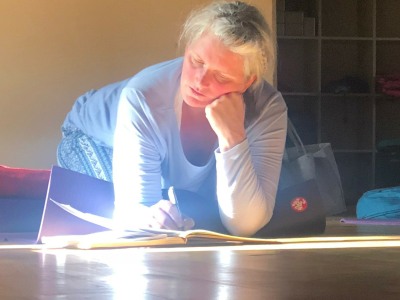AYP 29-day Yoga Teacher Training Course (TTC) curriculum
This course provides a comprehensive study programme for students training to become AYP Yoga teachers. The course is designed to produce competent, safe and compassionate teachers who meet a high standard of training.
The course includes both study and practice, leading participants to experience the transformational quality of yoga. It will equip them to then be able to effectively bring their knowledge and experience of yoga to others, to help them to transform their lives.
The course will include the study of the philosophy of yoga, teaching methodology, subtle anatomy, as well as classical Hatha Yoga techniques such as asana, meditation and pranayama.
The Teacher Training Course will comprise of the following categories:


Module 1 : Asana practice
To establish trainees in a strong and progressive asana practice.
This module will include developing the following:
- Becoming established in the practice of asana.
- Making corrections and adjustments safely.
- The principles of integrating mudras and bandhas with asana practice.
- Learning the important poses in the various categories of asana practice (standing poses, forward and backward bends, twists, and inversions etc.) .
- Understanding how different asanas affect different energetic channels and energetic centres in the body and the role this plays in the whole process of spiritual awakening.
Module 2 : Pranayama practice
To establish trainees in a strong and progressive pranayama practice.
The focus for this module will be on the practice of Spinal Breathing Pranayama but will also give students an understanding of the practice of kapalbhati, nadi shodhana and some of the more advanced pranayama practices such as spinal bhastrika and yoni mudra kumbhaka.
Module 3: Meditation and Samyama
To establish trainees in a strong and progressive meditation and samyama practice.
The focus for this module will be on the practices of Deep Meditation and Samyama.
This module will also include the following:
- An understanding of the role that mantras play in the process of meditation.
- The cultivation of inner silence.
- The role of the witness.
- What it means to refine a mantra to stillness.
- The cultivation of unity.
An understanding of the process of breath awareness and passive awareness as alternative forms of meditation for more sensitive practitioners.
Module 4: Aspects of teaching
To establish trainees in an understanding of the many aspects of teaching yoga to enable them to work effectively in a classroom environment.
This module will include developing a good understanding of the following subjects:
- The important qualities of a teacher and communication skills that are important in a classroom.
- The different aspects of teaching: demonstrating, observing alignment and correcting postures in a sensitive way.
- Class and venue organisation, setting up a class and room preparation.
- How to engage in marketing and promotion, understanding the finances involved with teaching yoga and understanding the legal aspects of teaching yoga including insurance.
- Different teaching styles employed by different teachers, the use of language and voice in a classroom, setting priorities within a lesson or workshop and understanding the dynamics within a group and the role of the teacher in this.
- The student learning process and the running of introductory courses.
The ethics involved in teaching, setting effective boundaries and using language appropriately.
How to plan a lesson and manage the time within the lesson, both for beginner level students and intermediate level students.
Module 5: Subtle anatomy
To establish an understanding of the human subtle anatomy and its relationship to the process of awakening.
This will include the following aspects:
- The role played in yoga by the chakras.
- The role played in yoga by the nadis.
- The awakening of kundalini.
- The changes that take place in the chakras, nadis and the flows of prana in the body, as the yoga practice progresses.
- The production of amrita (nectar).
- How we can work effectively with the subtle body in order to bring about a gentle and progressive awakening of the whole being.
Module 6: Yoga philosophy, lifestyle and ethics
To establish a good understanding in the trainee teacher of the following subjects:
Basic yoga philosophy including an overview of the Vedas and Upanishads.
A basic study of the Bhagavad Gita.
The theory and practical use of mantras in yoga.
The theory of meditation and how changes take place in the mind through its practice.
The theory of prana and its role in the process of awakening.
The Yoga sutras of Patanjali: A basic study including a study of the eight limbs of yoga.
Mudras and bandhas and their use in conjunction with asana and pranayama.
The theory of Bhakti yoga.
The theory of Jnana yoga.
Inner silence, emptiness and the basic grades of samadhi.
The theory of pranayama: The breathing practices.
The theory of samyama: Understanding how darana, dhyana, and samadhi work with samyama practice.
The theory of kundalini and how it relates to yogic practice.
Karma yoga and Seva: The importance of yoga as service to others.
The 5 stages of the mind: A study of the changes that occur on the mental level through the practice of yoga.
The theory of mantras: How mantras work on the subtle level of the mind and body.
A study of the yamas and niyamas: Restraints and observances.
Module 7: Practicum (This module is only for people taking the course in-person, at the retreat centre)
To establish trainees in the ability to lead a class in a competent, effective and compassionate manner.
This module will involve the following skills:
- Practice teaching as lead teacher.
- Observing others teaching.
- Receiving feedback from both peers and teachers.
- Giving feedback to peers about their teaching skills.
